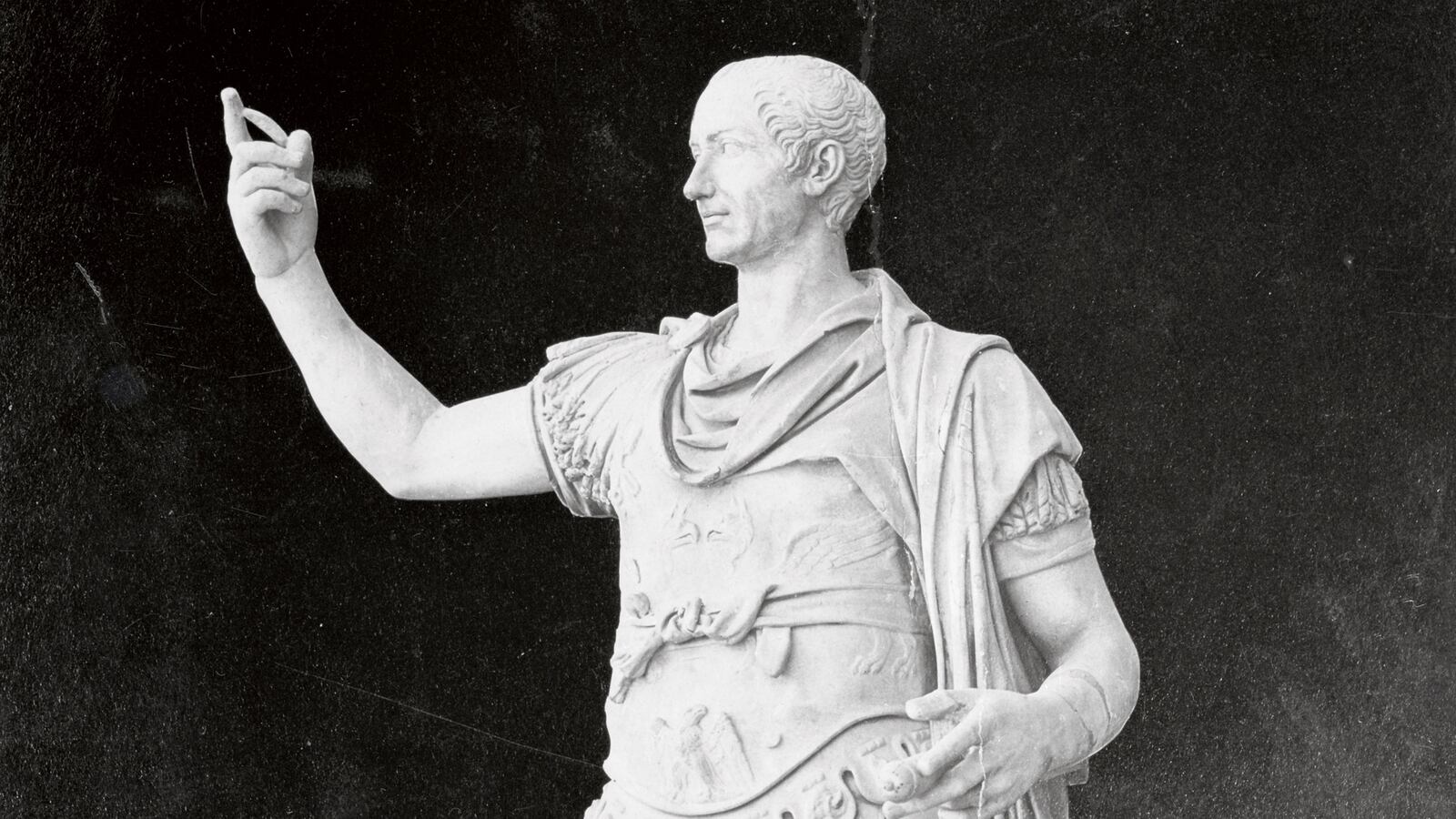In an age when statues of slaveholders and Civil War generals are being sent to the smelters, it’s strange to contemplate how little ire is provoked by busts of the Roman Caesars, or for that matter, of Alexander the Great. Arguably these autocrats did more harm to the human race than Robert E. Lee and his ilk. Yet we let them stay in their hallowed niches and on pedestals, their images burnished by the passage of time. We still call Alexander “the Great,” though some have compared him to modern fascist dictators.
Alexander’s post-classical legacy (surveyed recently in a wonderful round-up by famed art historian John Boardman) reveals just how pervasive is humanity’s desire for heroic rulers. Even the people conquered by Alexander—the Persians for example—came to depict him with reverence in their poems and artworks. Romancers imagined he’d journeyed into the sky, propelled by powerful birds, or into the depths of the sea in the world’s first submarine. The Jews, on whose lands he had probably trampled, supposed he had met their high priest and sought entry into their faith. Everyone within his vast empire wanted a piece of him. Even today the Greeks, whose ancestors died at the points of Alexander’s lances, claim him as their own and refuse to allow their neighbors in North Macedonia to do likewise.
The Roman emperors too often styled themselves after Alexander—one even used the armor and weapons said to be his—and then became objects of fascination in their own right, icons of power, authority, and rulership. Particular interest accrued around a series of twelve, beginning with Julius Caesar (not technically an emperor himself but “emperor-adjacent,” having wielded sole power and handed it on to his kinsman and heir, Augustus). Suetonius, a Roman biographer of the second century A.D., canonized this dozen in his work The Twelve Caesars, a work widely read in modern times and closely followed by Robert Graves in his novels I, Claudius (the source for the BBC series) and Claudius the God.
These canonical twelve, spanning about a century and a half (up to the death of Domitian in 96 A.D.), include many well-known names (Tiberius, Caligula, Nero) and others less resonant (Otho, Vitellius, Galba, each of whom reigned for less than a year). They’re certainly not the twelve one would choose as models of virtue or strength; a group of that kind would need to include Trajan and Marcus Aurelius, both of whom came later during the span of the “five good emperors.” But the twelve had the advantage of historical contiguity and also priority. As the first of their line, they defined the nature of monarchic power in the West and thus could be looked to as founding fathers by kings, Kaisers, and czars of early modern and Enlightenment Europe. (Indeed, the latter two titles are adaptations of “Caesar,” the name adopted by all Roman rulers even long after the Julian line had come to an end).
Mary Beard’s Twelve Caesars bears on its cover a set of 12 coronets and crowns, only one of which is recognizably Roman or even ancient. Her subject is not the Suetonian dozen themselves but the role their images played in projections of power, from the Renaissance to (roughly speaking) the early 20th century. (An afterword samples a few works of more recent vintage.). Europe’s monarchs and nobles collected, traded, and displayed the imperial twelve, depicted in frescoes and murals, on coins and medallions, inlaid on table-tops, carved in cameo pendants, and above all, sculpted as marble busts. The exact makeup of the group and even the number varied occasionally, but the main outlines of the set stayed remarkably constant.
But Roman imperial power did not always square with politics of the last half-millennium, a span in which monarchy, generally speaking, lost ground in much of the West. A visitor to the Smithsonian Museum of American History can see at first hand the great blunder sculptor Horatio Greenough committed, in the mid-19th century, by failing to grasp this point. There sits the marble form of George Washington, bare-chested and draped in Greek dress, with a Roman sword in one hand, its point turned away from the viewer as though to signify reluctance to use it. Pacifism aside, the image evokes the lordliness of a Zeus or a Caesar, a far cry indeed from Washington’s republican virtues, not to mention its utterly tasteless use of heroic semi-nudity. The sculpture was so disappointing to Congress, which had commissioned it, that it was removed from the Capitol building only three years after its installation there.
Beard is alive to these incongruities and anachronisms. Her book abounds in expert and keen-eyed readings of Roman imperial images, with insights into the meanings they might have held for those who displayed them. A set of tapestries depicting scenes from Julius Caesar’s life, commissioned by Henry VIII for his castle at Hampton Court, is a good case in point. Beard has traced the source of these scenes not to Suetonius or other historians, but to Lucan’s epic poem Pharsalia, a very dark portrait indeed of imperial power, written by a young firebrand who sought to assassinate Nero. It’s a strange choice of wall decoration for an English monarch who had a taste for absolutism. “[The tapestries] were raising questions about how far it was possible to see modern monarchy reflected in the ancient,” Beard comments, “and they maybe even provided a lens through which the modern monarch could face up to monarchy’s discontents.”
Not all of Beard’s readings are equally convincing. When she describes the impulse to collect all 12 imperial portraits as an expression of “the systematic ordering of knowledge itself,” one feels she is going too far. But her insights are always original and her lively, cheeky prose style always compelling. Like the best narrators of museum audio tours, she freely expresses her own response to the art she surveys, especially in the generous captions beneath the book’s lavish, and superbly reproduced, illustrations.
Those who have followed Beard’s prolific career will be astonished at the breadth and erudition of Twelve Caesars. This project took her far afield from Roman history, the area in which she has published with such great success, and also required fantastic amounts of archival research (she often knows not only who owned a given artwork but who that person acquired it from or later sold it to). At an age when many scholars might be slowing their pace or restricting their scope, Beard seems only to be expanding her horizons. One can only imagine in which direction she will turn next.
Twelve Caesars takes us back to an age when rulers could have themselves portrayed all’anticha, “in ancient guise,” to legitimize their power and overawe their subjects. The strategies first devised by Alexander the Great had an amazing run, over two millennia long, and in a way are still with us, although they take different forms. Marble busts may be out of style, and statues are proving increasingly problematic, but heroic imagery is still as politically potent as ever. Remember the meme of Trump alla Rambo, in the guise of Sylvester Stallone?






